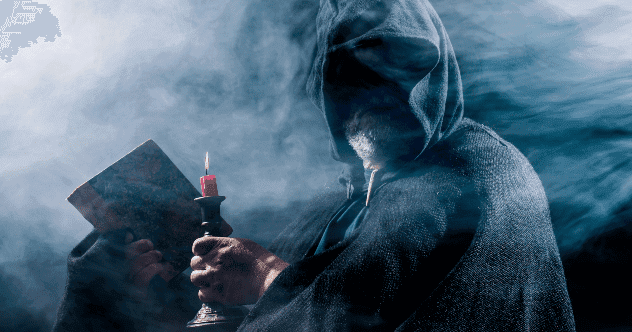While experts may disagree on what exactly constitutes a cult, these organizations have undeniably captivated and controlled the lives of thousands. Here are ten cults that have managed to gain massive followings, sparking both curiosity and concern.
10. The Children of God
Founded in the 1960s by David Berg, The Children of God gained notoriety for its controversial blend of sexual promiscuity and Christian worship. In the 1970s, they introduced “flirty fishing,” encouraging young female members to use sex to attract new converts, often leading to prostitution. The cult grew to over 130 communities worldwide, with over 10,000 members. They discouraged formal education, believing the apocalypse was near, and focused on rejecting worldly pursuits for the kingdom of God. David Berg died in 1994, and the group continued as The Family International until 2010.
9. Heaven’s Gate
In the early 1970s, Bonnie Nettles and Marshal Applewhite established The Crew, a group of devoted followers. They believed they were the two witnesses mentioned in Revelation 11. Touring Oregon and California, they preached apocalyptic beliefs. Applewhite claimed to be the second coming of Jesus. Followers were urged to eliminate sexual thoughts through a strict diet, with 18 male members even undergoing surgical castration. In March 1997, Heaven’s Gate gained infamy with a mass suicide. Thirty-nine members, dressed in purple and wearing white Nikes, committed suicide by drinking vodka and applesauce, then suffocating themselves to reach a higher spiritual plane.
8. Aum Shinrikyo
Led by Shogo Asahara, this Japanese doomsday cult preached that anyone not part of their group was destined for hell. Combining apocalyptic, Hindu, and Buddhist beliefs, Aum Shinrikyo presented itself as a yoga community. However, it held horrific practices. Members believed non-members could only be saved through death and took it upon themselves to ‘save’ them by killing them. The cult stockpiled firearms and chemical weapons, and was responsible for the 1995 Tokyo subway sarin gas attack, which killed 13 and injured many more. Though the cult is still active today, members claim to have abandoned their founder’s violent ideology.
9. Branch Davidians
David Koresh, a troubled young man, joined the Branch Davidians in Texas after being ousted from his church. He claimed to be divinely ordered to father a child with the cult founder’s wife and later pursued a relationship with an underage girl. After a power struggle, Koresh took control. The cult gained notoriety for claiming they could resurrect the dead, even exhuming bodies. A raid by federal agents on their Waco compound led to a four-hour gunfight and a two-month siege. Over 80 people, including Koresh, died when a fire engulfed the compound.
6. Unification Church
Also known as the Moonies, the Unification Church emerged in South Korea and gained a large following in the 1960s. Led by Sun Myung Moon, the cult combined Christianity, shamanism, Confucianism, and anti-communist beliefs. Moon claimed Jesus instructed him to complete His divine mission by creating ‘pure families’ through mass weddings between strangers. He even entered the Guinness Book of World Records for marrying 6,500 strangers in one ceremony. After these weddings, Moon required followers to donate their possessions to him.
5. The Illuminati
No cult list is complete without the Illuminati. Founded in 1776 in Bavaria, it started as a group of Enlightenment thinkers opposing superstition and organized religion. Outlawed by the government, they continued operating in secret. Many believe the Illuminati orchestrated the French Revolution in 1789. Today, the group is rumored to control major world events in pursuit of global domination, surrounded by conspiracy theories linking them to supernatural achievements.
4. The Manson Family
Charles Manson, born in 1934, attracted a group of young followers in San Francisco, California, known as the Manson Family. Unlike most cults, the Manson Family wasn’t founded on religious beliefs. Manson preached bizarre ideas, foreseeing a violent race war. His plan was for the Family to hide during the war and emerge to assume leadership roles. To initiate this war, Manson ordered murders of white people, intending to blame Black Americans. However, after two murder cases, Manson and his followers were arrested and charged.
3. The People’s Temple
Led by Pentecostal preacher Jim Jones, The People’s Temple championed racial equality and integration, attracting a large following. Influenced by socialist beliefs and liberation theology, Jones moved his followers from Indianapolis to Ukiah, California, and then to a commune in Guyana called Jonestown. In 1977, they fled to Jonestown after learning of an exposé. The cult gained notoriety after Jones’s men assassinated U.S. Congressman Leo Ryan. On the same day, Jones persuaded his followers to commit suicide, resulting in over 800 deaths.
2. The Movement for The Restoration Of The Ten Commandments of God
Founded by Joseph Kibweteere and Paulo Kashakun, this movement started after they claimed to have received visions from God. The group centered on the biblical Ten Commandments and believed the world would end on December 31, 2000. Mostly comprised of former Catholics from Uganda, the group’s apocalyptic beliefs attracted many followers. When the doomsday passed without incident, Kibweteere set another date. When that date arrived, he set the church on fire, killing over 500 members.
1. The Cult of Santeria Under Adolfo Constanzo
Adolfo Constanzo, fascinated by the dark side of Santeria, a blend of Roman Catholicism and Voodoo, trained with a sorcerer and relocated to Mexico. He lured drug lords and criminal syndicates, offering rituals at exorbitant prices to guarantee safety from enemies and the police. Gaining a significant following among criminals, they attributed their success to his rituals. Those who refused his demands vanished. Constanzo was later arrested and charged with murdering dozens of his followers after authorities discovered their bodies.
These cults, with their diverse beliefs and practices, serve as stark reminders of the power of persuasion, the vulnerability of individuals seeking purpose, and the potential for manipulation. Their stories continue to fascinate and warn us about the dangers of blind faith and unchecked authority.
What do you think makes a group a cult? Leave your comment below!










